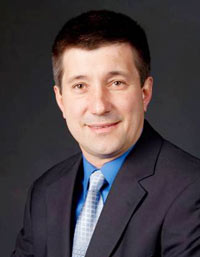Date
Cost
Free and open to the public
Location
Physical Science Building, Room 161
Description
Organic conjugated materials have attracted considerable attention for unique photophysical and photochemical properties, low cost, light weight, flexibility, and convenience of solution-based processing techniques. Synthetic design of new molecular structures targeting specific optoelectronic properties (such as interactions with light and efficient carrier transport), requires understanding dynamics and spatial delocalization of electronic excitations. In this talk I will overview the interplay between the spatial extent/properties of electronic wavefunctions and resulting electronic functionalities on example of several conjugated molecular systems. The simulation results have been obtained using a broad range of modeling techniques, ranging from molecular dynamics (MD) to electronic structure theory to solid state effective Hamiltonian approaches. In particular, our theoretical characterization of the molecular donor in a solution processed small molecule bulk-heterojunction photovoltaic device, elucidates electronic features responsible for record-breaking power conversion efficiency. Combination of classical MD with first-principles density functional theory (DFT) details the role of conformational disorder and intermolecular interactions on the localization properties of electronic states leading to formation of carrier traps in amorphous aggregates of conjugated polymers. Moreover, strong electron-phonon coupling further induces dynamical intramolecular localization (self-trapping) of electronic excitations (polarons and singlet/triplet excited states). Embedding platinum atoms in polymer’s backbone tunes the spin-orbit coupling and leads to appearance of metal-to-ligand charge transfer states, which results in a record intersystem crossing timescale in these polymers with their potential use for ‘white’ organic light emitting diodes. Finally, localization of excitonic states due to electron-phonon coupling in cycloparaphenylenes invalidates Condon approximation and breaks optical selection rules, making these materials to be efficient emitters.
Presenter

Sergei Tretiak, Ph.D.
Theoretical Division
Center for Nonlinear Studies and Center for Integrated Nanotechnologies
Los Alamos National Laboratory
More information
Light refreshments will be served
Contact
Ushaben Lal NanoScience Technology Center 407-882-0032 usha@ucf.edu